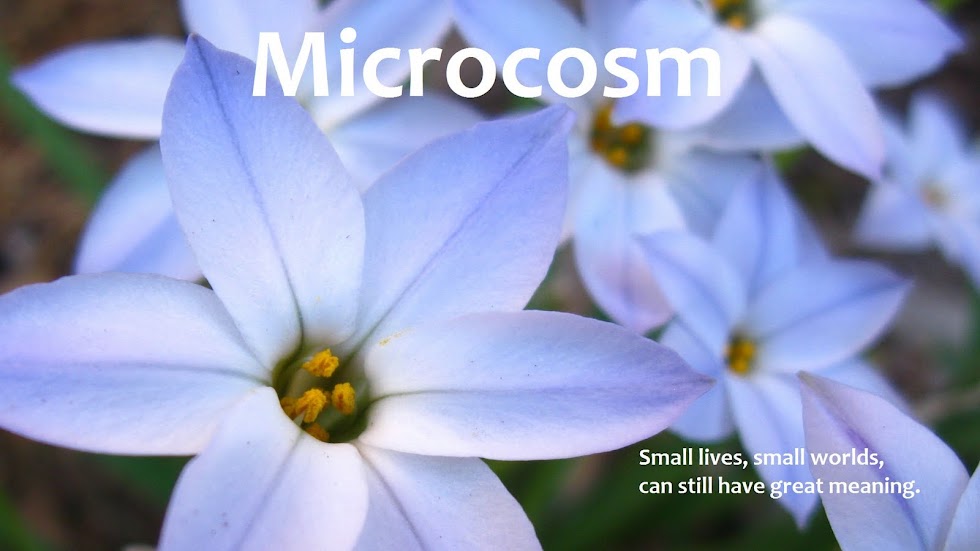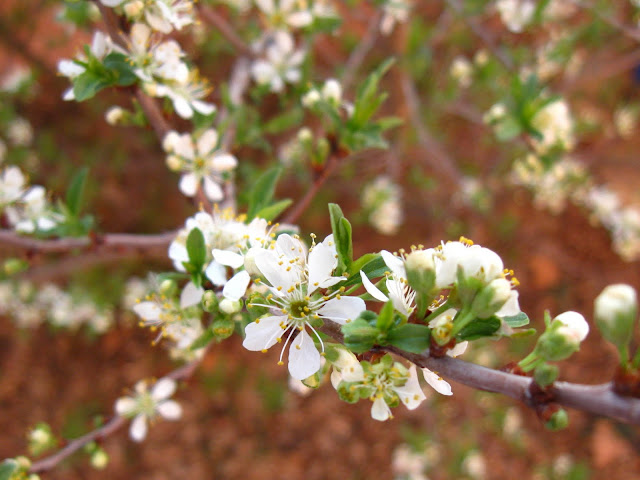The trick with flaws is to get the right kinds in the right measure. Sam Spade has a fair share of them and yet manages to be a more or less good(ish) guy; the grimy patina, one suspects, can still be polished away to a nice bright shine. Hamlet, on the other hand—well, look what having the wrong flaw did to him.
 |
| Gila Wilderness Area, southern New Mexico, fall 2010 |
I've been thinking about "acceptable flaws" this week while planning ahead for September. (Fall is the best season for gardening here, as new plantings take less water to establish.) (It's also just the best season.) The two side beds I'm quite happy with—they're young yet and need to grow into themselves, but their bones seem strong. They have a couple of minor weak spots of the kind I can either live with or fix, depending. The flaws are acceptable, the "eating too much dark chocolate" kind, not the "wandering around with poor Yorick's skull and having an existential crisis" kind. In the grand scale of gardening, they're not really even flaws.
The main garden is another matter. In five years I have never yet been satisfied with it, to the extent that I have to wonder whether the flaw lies in my gardening or in my attitude. This wouldn't be the first time I've found it difficult to be pleased with my own work.
 |
| Gila Wilderness Area, fall 2010 |
This time, however, I don't think that's the issue. I've had a lot to learn since moving to New Mexico: new plants, new growing conditions. The insect pests ran amok for a couple of years, and getting them in balance took a while. Townhouse micro-climates of shade and wind present their own challenges. And so on. All these things take time.
But more than anything, it has taken me a while to learn what I want from my garden. In fact, I only realized it about a month ago, after a visit to one of our Open Space parks. Walking around on a hillside surrounded by low grasses dotted with broom snakeweed and prickly pear, cholla and juniper, looking out over the Rio Grande valley to the horizon or upward toward the heights of the Sandias, with the sky leaping into the stratosphere all around me, my heart just sang. Despite the drought, despite how parched everything was, that landscape made me feel like I could fly.
| Elena Gallegos Open Space Park, June 2011 |
The Hamlet-sized flaw in my gardening became clear:
What I love is open space.
I have a walled garden.
And I am mildly claustrophobic.
Ah. Well. Or perhaps, "Angels and ministers of grace, defend us!" Of course, small, walled spaces do not have to feel confining given the right approach. But I've been trying to create a traditional, densely planted garden with "normal" sized plants, and I find myself always feeling a little...cramped, a little uncomfortable. In a small garden the steps from lush to jungly to stifling are short ones indeed.
| The bosque at the Rio Grande Nature Center, May 2011 |
So I'm working on (yet another) master plan, one that I'm really kind of excited about. I hope to evoke the airiness and shimmery light that to me are the essence of a southwestern landscape. The general structure of the garden—the shape and the anchoring desert olive trees and sand cherries—should be able to stay the same. I'm using the photos above and below from various outings in the last year for inspiration, more for the general feel than for ideas of things to plant. Just be warned: I'll probably keep telling you all about it, whether you want to hear it or not, because I'm going to be obsessing for a while.
Call it a character flaw.
_______________________
Feel free to ignore these—I 'm just trying to pull ideas together in one place for now, and this is pretty handy.
| At Elena Gallegos OS Park—the rabbit gives a sense of scale among the grasses (and it's cute) |
| At Elena Gallegos OS Park |
 |
| Gila Wilderness |
 |
| Gila Wilderness |
 |
| The bosque—February |
| The bosque—May |























